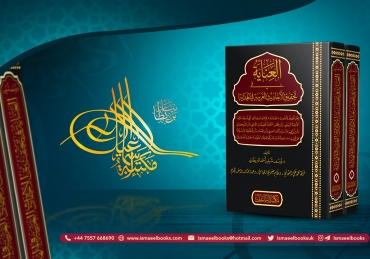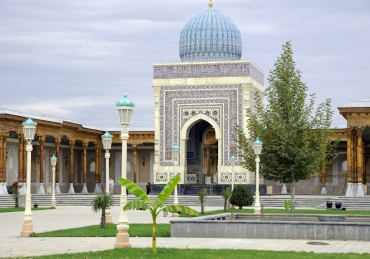Was Imam Abū Ḥanīfah a tābiʿī? I have heard some people say that he was not. Please clarify.
بسم الله الرحمن الرحيم
Answer
According to the majority of scholars, Imam Aʿẓam Abū Ḥanīfah (d. 150/767) is a tābiʿī. A tābiʿī is someone who met or had sight of a companion of the Prophet ﷺ.[1] It is true that according to most ḥadīth experts including our teacher Muḥaddith al-ʿAṣr Mawlānā Muḥammad Yūnus Jownpūrī (b. 1355/1936), Imam Abū Ḥanīfah did not transmit any ḥadīth directly from a companion.[2] However, this is not a prerequisite for a person to be considered a tābiʿī, according to the preferred view.[3] ʿAllāmah Ibn Ḥajar al-Makkī (d. 974/1567) writes in al-Khayrāt al-Ḥisān (p. 47):
وأكثر المحدثین علی أن التابعي من لقي الصحابي وإن لم یصحبه
“And the majority of the ḥadīth scholars are of the view that a tābiʿī is he who met a companion even if he did not remain in his company.”
Scholars who have affirmed that Imam Abū Ḥanīfah is a tābiʿī or saw Anas ibn Mālik (may Allah be pleased with him) (d. 93/711-2) include:
- Imam Ibn Saʿd (d. 230/845).[4]
- Imam Daraquṭnī (d. 385/995).[5]
- Imam Khaṭīb al-Baghdādī (d. 463/1071).[6]
- Ḥāfiẓ Abū ʿUmar ibn ʿAbd al-Barr (d. 463/1071).[7]
- Imam Abū Maʿshar ʿAbd al-Karīm ibn ʿAbd al-Ṣamad al-Qaṭṭān (d. 478/1085-6).[8]
- Imam Abū Saʿd al-Samʿānī (d. 562/1166-7).[9]
- Imam Ibn al-Jawzī (d. 597/1201).[10]
- Imam Faḍl Allah al-Tūrībishtī (d. ca. 660/1261).[11]
- Imam Nawawī (d. 676/1277).[12]
- Ḥāfiẓ Jamāl al-Dīn al-Mizzī (d. 742/1341).[13]
- Ḥāfiẓ Shams al-Dīn al-Dhahabī (d. 748/1348).[14]
- Qāḍī Ṣalāh al-Dīn al-Ṣafdī (d. 764/1363).[15]
- ʿAllāmah Abū Mūḥammad al-Yāfiʿī (d. 768/1367).[16]
- Ḥāfiẓ Ibn Kathīr (d. 774/1373).[17]
- Ḥāfiẓ ʿAbd al-Qādir al-Qurashī (d. 775/1373).[18]
- Ḥāfiẓ Sirāj al-Dīn al-Bulqīnī (d. 805/1403).[19]
- Ḥāfiẓ Walī al-Dīn al-ʿIrāqī (d. 826/1422).[20]
- ʿAllāmah Jazarī (d. 833/1429).[21]
- Ḥāfiẓ Ibn Ḥajar al-ʿAsqalānī (d. 852/1449).[22]
- Imam Abū al-Maḥasin Yūsuf ibn Tagrī Bardī (d. 874/1470).[23]
- Ḥāfiẓ Jalāl al-Dīn al-Suyuṭī (d. 911/1505).[24]
- ʿAllāmah Qasṭalānī (d. 923/1517).[25]
- ʿAllāmah Muḥammad ibn Yūsuf al-Ṣāliḥī al-Shāmī (d. 942/1536).[26]
- ʿAllāmah Abū al-Ḥasan Ibn ʿIrāq (d. 963/1555-6).[27]
- ʿAllāmah Ibn Ḥajar al-Makkī (d. 974/1567).[28]
- ʿAllāmah Ṭāhir Pattanī (d. 986/1578-9).[29]
- Mullā ʿAlī al-Qārī (d. 1014/1605).[30]
- ʿAllāmah Muḥammad Akram ibn ʿAbd al-Raḥmān Sindī (n.d.).[31]
- ʿAllāmah ʿAbd al-Ḥayy al-Laknawī (d. 1304/1886).[32]
- ʿAllāmah Anwar Shāh Kashmīrī (d. 1352/1933).[33]
- Shaykh Ẓafar Aḥmad ʿUthmānī (d. 1394/1974).[34]
- Muḥaddith al-ʿAṣr Mawlānā Muḥammad Yūnus Jownpūrī (b. 1355/1936).
The quotes from some of the non-Ḥanafī scholars are presented to assure the reader that this view is not only held by Ḥanafī scholars.
Imam Khaṭīb al-Baghdādī (d. 463/1071) writes in Tārīkh Baghdad (13: 325):
إمام أصحاب الرأي وفقیه أهل العراق رأی أنس بن مالك
“The Imam of the people of [juridical] opinion and the jurist of the people of Iraq, he saw Anas ibn Mālik.”
He also writes in another place in Tārīkh Baghdad (22: 76):
فأبوحنیفة أدرك جماعة من الصحابة وعاصرهم ، ومولده یقتضي ذلك ، فإنه ولد سنة ثمانین وعاش إلی سنة خمسین ومائة ، فقد أمكن اللقاء لوجود جماعة من الصحابة في ذلك العصر
“So Abū Ḥanīfah met a group of companions and shared their era, and his birth implies this, because he was born in the year 80 and he lived until the year 150. Thus, meeting [the companions] was possible based on the existence of a group of companions in that era.”
Similarly, Ḥāfiẓ Ibn ʿAbd al-Barr (d. 463/1071) writes in Jāmiʿ Bayān al-ʿIlm wa Faḍlih (1: 203):
ذكر محمد بن سعد كاتب الواقدي أن أبا حنيفة رأى أنس بن مالك وعبد الله بن الحارث بن جزء الزبيدي
“Muḥammad ibn Saʿd, the writer of al-Waqidī, has mentioned that Abū Ḥanīfah saw Anas ibn Mālik and ʿAbd Allah ibn Jazʾ al-Zubaydī.”
Similarly, Imam Ibn al-Jawzī (d. 597/1201) writes in al-ʿIlal al-Mutanāhiyah (1: 128):
قال الدارقطني: وأبوحنیفة لم یسمع من أحد من الصحابة ، إنما رأی أنس بن مالك بعینه
“Dāraquṭnī said: And Abū Ḥanīfah did not hear [ḥadīths] from any of the companions. He saw Anas ibn Mālik with his eyes.”
Similarly, Ḥāfiẓ Ibn Ḥajar al-ʿAsqalānī (d. 852/1449) writes, as cited in Tabyīḍ al-Ṣaḥīfah (p. 33):
فهو بهذا الاعتبار من طبقة التابعین ، ولم یثبت ذلك لأحد من أئمة الأمصار المعاصرین له
“Thus, he is according to this consideration from the category of tābiʿīn, and this [status] is not established for any of the Imams of the cities who were his contemporaries.”
Similarly, ʿAllāmah Ibn Ḥajar al-Makkī (d. 974/1567) writes:
وحینئذ فهو من أعیان التابعین الذین شملهم قوله تعالی: والذین اتبعوهم بإحسان رضي الله عنهم ورضوا عنه وأعد لهم جنات تجري تحت الأنهار خالدین فیها أبدا ذلك الفوز العظیم
“And as such he is from the notable tābiʿūn who are covered by the verse of The Almighty: and those who followed them in goodness, Allah is pleased with them and they are pleased with Him, and He has prepared for them gardens beneath which rivers flow, wherein they will abide forever. That is the great attainment.” [Qurʾān, 9: 100].
There is disagreement among scholars regarding the number of companions he met or had sight of. However, there is broad consensus that he saw Anas ibn Mālik (may Allah be pleased with him) (d. 93/711-2).[35] In fact, Ḥāfiẓ Shams al-Dīn al-Dhahabī (d. 748/1348) and others suggest that he saw him on more than one occasion, as reported by Imam Ibn Saʿd (d. 230/845).[36] Ḥāfiẓ Dhahabī (d. 748/1348) writes:
رأی أنس بن مالك غیر مرة لما قدم علیهم الكوفة ، رواه ابن سعد عن سیف بن جابر أنه سمع أبا حنیفة یقوله
“He saw Anas ibn Mālik more than once when he came to Kufa. Ibn Saʿd transmitted this from Sayf ibn Jābir that he heard Abū Ḥanīfah say this.” [37]
Allah knows best
Yusuf Shabbir
24 Dhū al-Ḥijjah 1437 / 26 September 2016
Approved by: Mufti Shabbir Ahmad Sahib
Footnotes
[1] Tadrīb al-Rāwī (2: 699); Sharḥ Sharḥ Nukhbah al-Fikr (p. 596); al-Khayrāt al-Ḥisān (p. 47); al-Iṣābah (1: 158).
[2] Tārīkh Baghdad (4: 429; 9: 113); Wafayāt al-Aʿyān (5: 406); Siyar Aʿlām al-Nubalāʾ (6: 390); Shadharāt al-Dhahab (2: 230); Tabyīḍ al-Ṣaḥīfah (p. 33); al-Khayrāt al-Ḥisān (p. 47); ʿUqūd al-Jumān (p. 62); al-Yawāqīt al-Gāliyah (2: 440). Those who affirm his direct transmissions from the companions include Ḥāfiẓ ʿAbd al-Qādir al-Qurashī in al-Jawāhir al-Muḍīʾah (1: 28; 1: 452) and Mullā ʿAlī al-Qārī in al-Athmār al-Janiyyah fī Asmaʾil al-Ḥanafiyyah (1: 133). Ḥāfiẓ Jalal al-Dīn al-Suyuṭī is inclined towards this in Tabyīḍ al-Ṣaḥīfah (p. 34), as is Ḥāfiẓ Badr al-Dīn al-ʿAynī (d. 855/1451) (ʿUqūd al-Jumān, p. 62). However, our teacher Muḥaddith al-ʿAṣr Mawlānā Muḥammad Yūnus Jownpūrī (b. 1355/1936) disagrees and endorses the view of the majority of ḥadīth experts, a view shared by ʿAllāmah Qāsim ibn Quṭlūbughā (d. 879/1474) and ʿAllāmah Muḥammad ibn Yūsuf al-Ṣāliḥī al-Shāmī (d. 942/1536) (ʿUqūd al-Jumān, p. 62).
[3] Tadrīb al-Rāwī (2: 699).
[4] This has been cited by Ḥafiẓ Ibn ʿAbd al-Barr in Jāmiʿ Bayā al-ʿIlm wa Faḍlih (1: 203) and many scholars thereafter.
[5] Al-ʿIlal al-Mutanāhiyah (1: 128); Tadkhirah al-Mawḍūʿāt (p. 111); Tabyīḍ al-Ṣaḥīfah (p. 33). It is worth noting that some scholars have cited a quote of Imam Daraquṭnī which appears to negate Imam Abū Ḥanīfah meeting any companion. See Lisān al-Mīzān (1: 612); Tanzīh al-Sharīʿah (1: 271). However, it seems as though the full quote has not been cited as it appears in al-ʿIlal al-Mutanāhiyah (1: 128), which affirms that Imam Abū Ḥanīfah saw Anas ibn Mālik (may Allah be pleased with him). Thereafter, I came across the view of Imam Daraquṭnī in Tārīkh Baghdad (4: 429) that negates this. This is also cited in al-Yawāqīt al-Gāliyah (2: 440). It therefore appears that the second sentence in al-ʿIlal al-Mutanāhiyah is a statement from Imam Ibn al-Jawzī and not Imam Dāraquṭnī. Thus, Imam Dāraquṭnī probably did not regard Imam Abū Ḥanīfah as a tābiʿi. Allah knows best.
[6] Tārīkh Baghdad (13: 325; 22: 76).
[7] Jāmiʿ Bayān al-ʿIlm wa Faḍlih (1: 203).
[8] Tārīkh Baghdad (22: 76); Tabyīḍ al-Ṣaḥīfah (p. 33).
[9] Al-Ansāb (6: 64).
[10] Al-ʿIlal al-Mutanāhiyah (1: 128).
[11] Sharḥ Sharḥ Nukhbah al-Fikr (p. 596).
[12] Tahdhīb al-Asmāʾ wa al-Lugāt (2: 216).
[13] Tahdhīb al-Kamāl (29: 417).
[14] Siyar Aʿlām al-Nubalāʾ (6: 390); al-ʿIbar (1: 164); Tadhkirah al-Ḥuffāẓ (1: 126); Tārīkh al-Islām (9: 306).
[15] Al-Wāfī bi al-Wafayāt (27: 89).
[16] Mirʾāt al-Jinān (1: 242).
[17] Al-Bidāyah wa al-Nihāyah (10: 107).
[18] Al-Jawāhir al-Muḍīʾah (1: 452).
[19] Sharḥ Sharḥ Nukhbah al-Fikr (p. 596).
[20] Tabyīḍ al-Ṣaḥīfah (p. 33).
[21] Gāyah al-Nihāyah fī Ṭabaqāt al-Qurrāʾ (2: 342).
[22] Tahdhīb al-Tahdhīb (10: 449); Tabyīḍ al-Ṣaḥīfah (p. 33).
[23] Al-Nujūm al-Zāhirah (2: 12).
[24] Ṭabaqāt al-Ḥuffāẓ (p. 80); Tabyīḍ al-Ṣaḥīfah (p. 33).
[25] Irshād al-Sārī (1: 390).
[26] Tanzīh al-Sharīʿah (1: 271).
[27] ʿUqūd al-Jumān fī Manāqib al-Imām al-Aʿẓam Abī Ḥanīfah al-Nuʿmān (p. 49).
[28] Al-Khayrāt al-Ḥisān (p. 47).
[29] Tadhkirah al-Mawḍūʿāt (p. 111).
[30] Mirqāt al-Mafātīḥ (1: 29); Sharḥ Sharḥ Nukhbah al-Fikr (p. 596); al-Athmār al-Janiyyah fī Asmaʾil al-Ḥanafiyyah (1: 133).
[31] Imʿān al-Naẓr Sharḥ Sharḥ Nukhbah al-Fikr (p. 211).
[32] Al-Taʿlīq al-Mumajjad (1: 119); Iqāmah al-Ḥujjah ʿala anna al-Ikthār fī al-Taʿabbud Laysa bi Bidʿah (Majmūʿah Rasāʾil al-Laknawī, 2: 179).
[33] Fayḍ al-Bārī (1: 290).
[34] Qawaʿid fī ʿUlūm al-Ḥadīth (p. 306); Abū Ḥanīfah wa Aṣḥābuh al-Muḥaddithūn (p. 6).
[35] Tārīkh Baghdad (13: 325); Tahdhīb al-Kamāl (29: 417); Siyar Aʿlām al-Nubalāʾ (6: 390); al-ʿIbar (1: 164); Tadhkirah al-Ḥuffāẓ (1: 126); al-Bidāyah wa al-Nihāyah (10: 107); Tahdhīb al-Tahdhīb (10: 449); Ṭabaqāt al-Ḥuffāẓ (p. 80); Tanzīh al-Sharīʿah (1: 271); Tadhkirah al-Mawḍūʿāt (p. 111); Fayḍ al-Bārī (1: 290). Refer to Mirʾāt al-Jinān (1: 242), al-Jawāhir al-Muḍīʾah (1: 28; 1: 452), Tabyīḍ al-Ṣaḥīfah (p. 33), Mirqāt al-Mafātīḥ (1: 29), Shadharāt al-Dhahab (2: 229) and al-Khayrāt al-Ḥisān (p. 48) for the names of additional companions Imam Abū Ḥanīfah is reported to have seen.
[36] Tadhkirah al-Ḥuffāẓ (1: 126); Tārīkh al-Islām (9: 306); al-Wāfī bi al-Wafayāt (27: 89). We have been unable to locate the narration of Ibn Saʿd in his Ṭabaqāt. If anyone comes across this narration, please contact us.
[37] Tadhkirah al-Ḥuffāẓ (1: 126).






